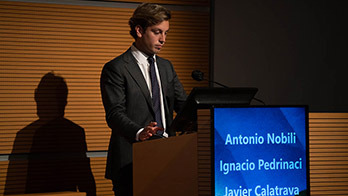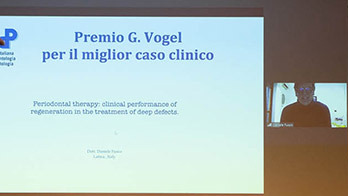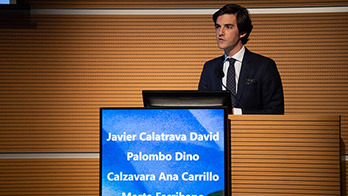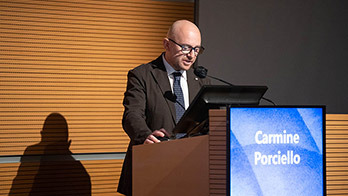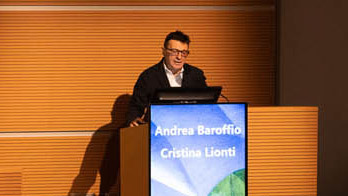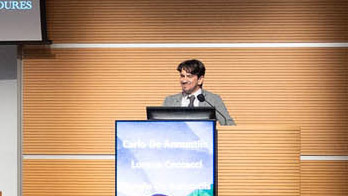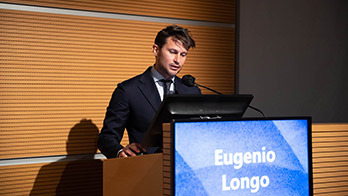Lingual Connective Tissue Wall within a comprehensive mucogingival-restorative-regenerative treatment of a Stage III localised periodontitis patient with generalized gingival recessions
PREMIO G. VOGEL 2022
Javier Calatrava
A 46 year old, systemically healthy and non smoker male patient came our service with the chief complaint of asking for a second opinion since he had gone to another practice too treat his recessions and he had been told that his lower central incisors needed to be removed. In the clinical exam, most teeth had a clinical situation compatible with periodontal health; but teeth 31 and 41 presented lingual RT3 recessions of 5 mm and a defect in the interdental papilla, associated with a lingual infrabony defect with probing depths up to 8 mm and bleeding on probing, however in the buccal aspect the bone crest was preserved and both teeth had no mobility. Moreover, the molars of the first sextant presented pocket depths up to 9 mm with bleeding on probing and degree 1 furcation involvement. The patient was diagnosed with stage III grade B localised periodontitis and generalised RT1 and RT2 gingival recessions.
The main overall treatment goals aimed to fulfill the patient’s expectations, which were to treat and improve the long term prognosis of teeth 31 and 41 and to treat the gingival recessions; and to reach the outcomes of periodontal therapy proposed in the EFP guidelines for Stage III Periodontitis patients. The specific treatment goals for the lingual area in the fifth sextant were to obtain access for proper instrumentation, reduce probing pocket depth and gain clinical attachment level, while trying to cover as much as possible the lingual RT3 recessions in 3.1 and 4.1; with the overall goal to imrpve the long term prognosis of 3.1 and 4.1. Regarding the gingival recessions the main treatment outcomes were to obtain root coverage as well as to increase the amount of keratinized gingiva.
Step 3 of periodontal therapy (Sanz et al. 2020) was carried out in different surgeries. In the fifth sextant a lingual coronally advanced flap was performed with a connective tissue wall and application of enamel matrix derivatives (Zuchelli et al. 2014). To deal with the residual pockets that did not meet outcomes of periodontal therapy in the first sextant, an apically position flap was performed in combination with extraction of 1.8. Lastly, in the first, third, fourth and sixth sextant, mucogingival surgery was performed, and following the decision taking tree proposed by Stefanini et al. 2018 multiple coronally advanced flaps were performed in combination with connective tissue grafts, according to the technique and principles described by Zuchelli and De Sanctis 2000. Before performing the mucogingival surgeries, all non carious cervical lesions were restored according to the principles described by Zuchelli et al. 2011.
The case is presented after a follow up of 12 months, in which all treatment outcomes have been fulfilled. In the fifth sextant, teeth 31 and 41 present probing depths of 3 mm with no bleeding on probing, recessions have been reduced to 2-3 mm, there has been an increase in the height of the interdental papilla; and the radiograph shows an image compatible with higher bone density and bone gain compared to the baseline radiograph. Regarding the other surgeries, all teeth present a situation that is compatible with periodontal health, and all of the recessions have been fully covered. It can be concluded that a combination of a mucogingival, restorative and regenerative approach is able to treat stage III periodontitis patients, and that the lingual connective tissue wall technique, although complex to perform, can solve complex combined osseous and mucogingival defects.
